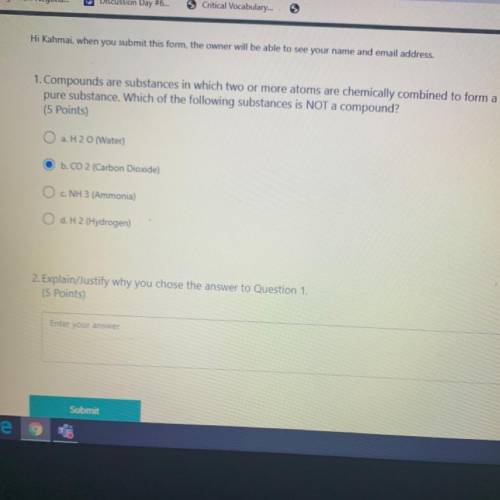

Answers: 1
Other questions on the subject: Physics

Physics, 21.06.2019 18:20, sahaitong814
What color of light must blue light mix with to create white light? a. yellow b. white c. blue d. green
Answers: 2

Physics, 21.06.2019 23:30, jude3412
Part a determine the magnitude of the x component of f using scalar notation. fx f x = nothing lb request answer part b determine the magnitude of the y component of f using scalar notation. fy f y = nothing lb request answer part c determine the magnitude of the z component of f using scalar notation. fz f z = nothing lb request answer provide feedback figure1 of 1a force vector acting on a ring attached to the ground is shown in the xyz space together with its x, y, and z components lying on the corresponding positive axes. the ring is located at the origin. force f is located in the first octant. f makes an angle of 60 degrees with its x component and an angle of 45 degrees with its y component. a force vector acting on a ring attached to the ground is shown in the xyz space together with its x, y, and z components lying on the corresponding positive axes. the ring is located at the origin. force f is located in the first octant. f makes an angle of 60 degrees with its x component and an angle of 45 degrees with its y component.
Answers: 2

Physics, 22.06.2019 04:50, jojoblue2004
Unpolarized light whose intensity is 1.19 w/ is incident on a polarizer. (a) what is the intensity of the light leaving the polarizer? (b) if the analyzer is set at an angle of = 41.0∘ with respect to the polarizer, what is the intensity of the light that reaches the photocell?
Answers: 1

Physics, 22.06.2019 11:30, ramirezzairap2u4lh
Water is siphoned from a large tank and discharges into the atmosphere through a 50-mm diameter tube. the end of the tube is b = 2.1 m below the tank bottom which is a = 7.4 m deep, and viscous effects are negligible. determine the maximum height h over which the water can be siphoned without cavitation occurring. atmospheric pressure is 101.4 kpa, and the water vapor pressure is 1.79 kpa (absolute)
Answers: 3
Do you know the correct answer?
Compounds are substances in which two or more atoms are chemically combined to form a new,
pure sub...
Questions in other subjects:

Physics, 17.06.2021 05:30


Physics, 17.06.2021 05:40

Chemistry, 17.06.2021 05:40



Mathematics, 17.06.2021 05:40

History, 17.06.2021 05:40

Mathematics, 17.06.2021 05:40

English, 17.06.2021 05:40



 (hydrogen) is not a compound because it's not made of more than one element. Yes we have more than one component, but both components are of the same element H.
(hydrogen) is not a compound because it's not made of more than one element. Yes we have more than one component, but both components are of the same element H.  is a compound because it's made of carbon and oxygen (specifically 1 carbon and 2 oxygen), so we have at least two different elements here.
is a compound because it's made of carbon and oxygen (specifically 1 carbon and 2 oxygen), so we have at least two different elements here.



